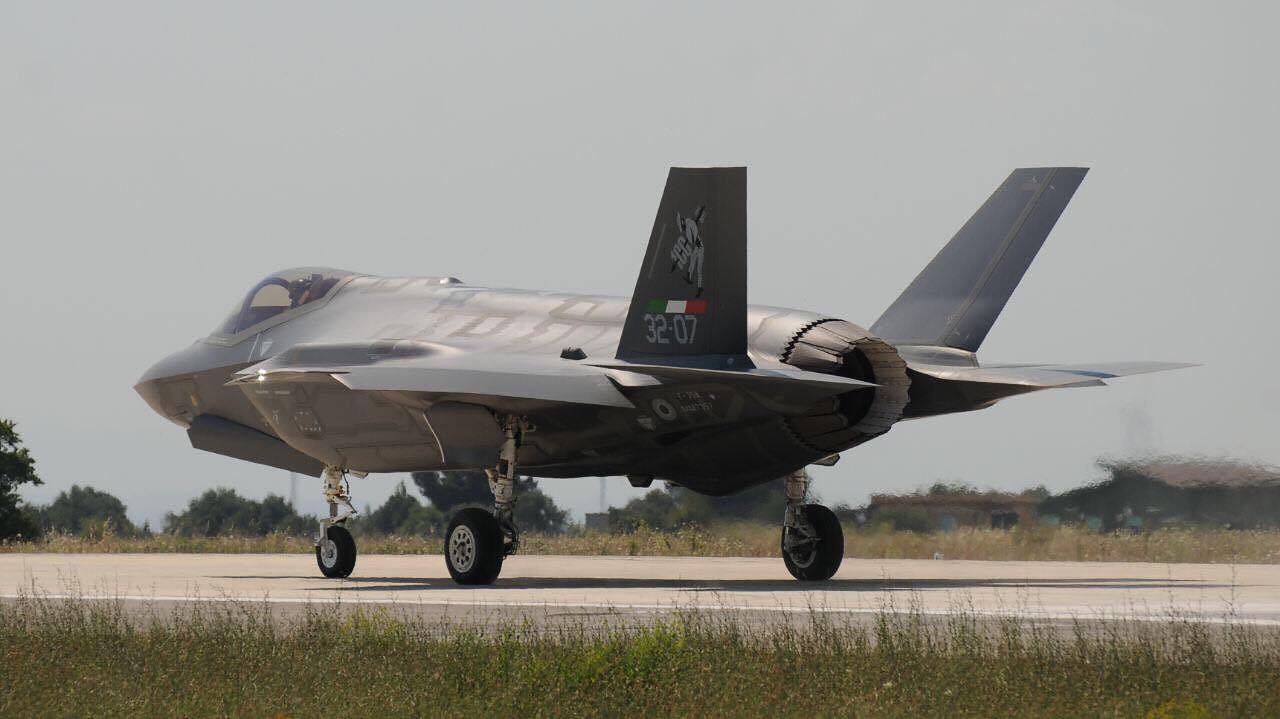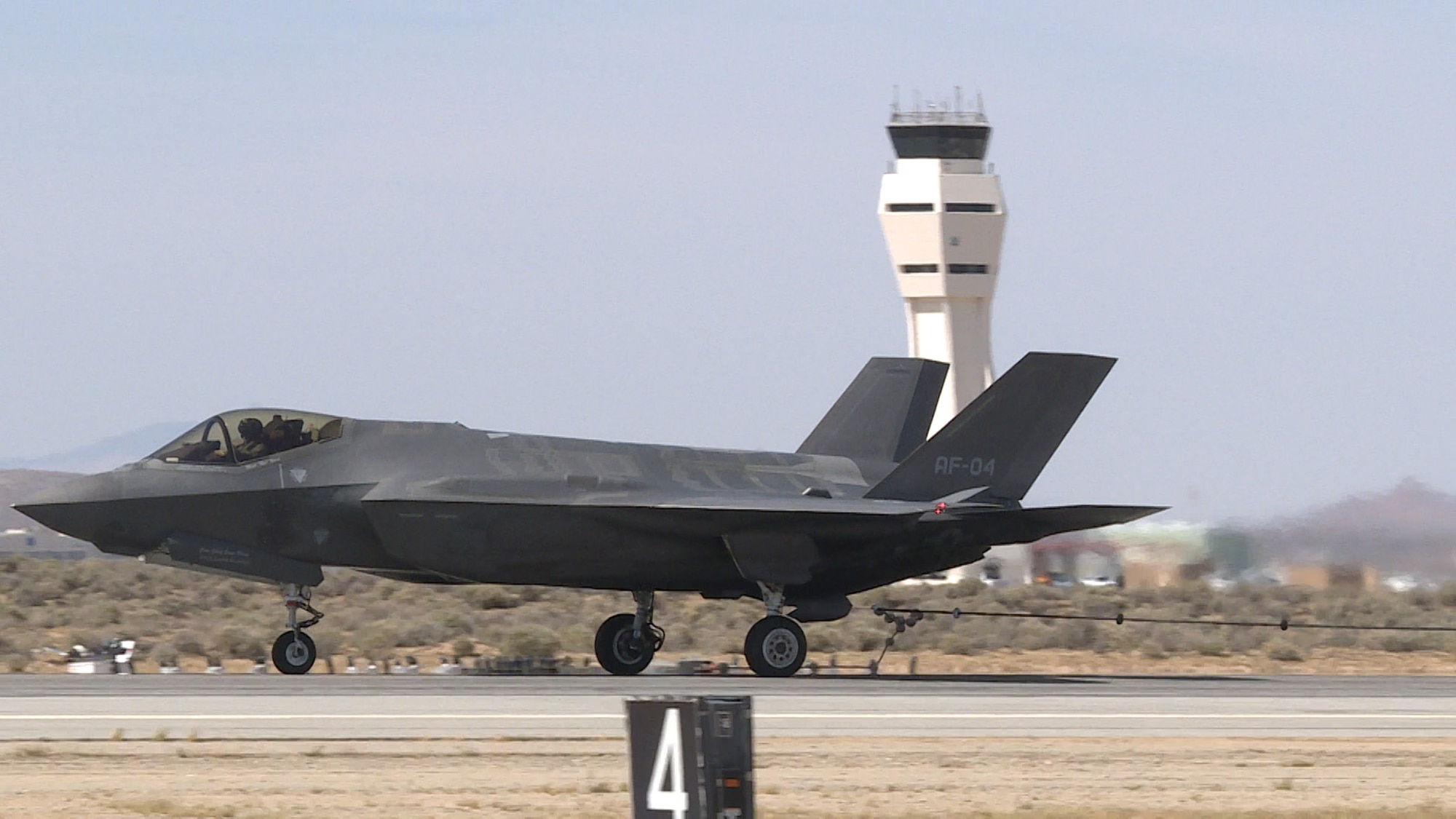Jsf Aircraft - The Joint Strike Fighter (JSF) is a development and acquisition program that will replace a number of existing fighter, strike, and land-based aircraft in the United States, the United Kingdom, Italy, Canada, Australia, the Netherlands, Denmark, Norway, and the former Turkey.
After competition between the Boeing X-32 and the Lockheed Martin X-35, the final design was chosen based on the X-35. This is the F-35 Lightning II, which will replace a variety of tactical aircraft, including the US F-16, A-10, F/A-18A-D, AV-8B, EA-6B and the British Harrier GR7, GR9 and Tornado. GR4. The estimated average annual cost of this program is 12.5 billion. $1.1 trillion, with estimated program life cycle costs.
Jsf Aircraft

The JSF program is the result of the merger of the Joint Affordable Light Fighter (CALF) and Joint Advanced Strike Technology (JAST) projects.
The Joint Strike Fighter—an Air Combat Capability Enhancement
The combined project continued under the name JAST until the Engineering, Manufacturing and Development (EMD) phase, during which the project became the Joint Strike Fighter.
CALF was a DARPA program to develop a STOVL fighter jet (SSF) for the United States Marine Corps to replace the F-16 Fighting Falcon. In the late 1980s, the United States Air Force transitioned to the F-16 Agile Falcon, essentially a large F-16, and continued to consider other designs. In 1992, the Marine Corps and the Air Force agreed to jointly develop an affordable light fighter, also known as the Advanced Short Takeoff and Vertical Landing (ASTOVL). The CALF project was selected after the persuasion of Paul Bevilaqua
The Joint Advanced Strike Technologies (JAST) program was created in 1993 as part of one of the recommendations of the United States Department of Defense (DoD), "Bottom-up review for the involvement of the United States Navy in the Common Strike Fighter program".
The review also directed the Pentagon to continue the F-22 Raptor and F/A-18E/F Super Hornet programs, terminate the Multi-Role Fighter (MRF) and A/F-X programs, and limit the F-16 and F/A. -18C/D we buy. The JAST program office was founded in 1994. 27 January to develop SOR aircraft, weapons and technology to replace several different US and British aircraft with a single family of aircraft; most replacement F-16s produced. Merrill McPeak, the former US Air Force chief of staff, complained that Defense Secretary Les Aspin's decision to force all three services to use one aircraft greatly increased the cost and complexity of the project.
F 35b Jsf/stovl Usmc Model 1/48
In November 1995, the United Kingdom signed a memorandum of understanding to become an official partner and agreed to pay $200 million or 10% of the concept demonstration phase.
In 1997, the Canadian Department of National Defense joined the concept demonstration phase and invested $10 million. US dollars. This investment allowed Canada to participate in a large and rigorous competitive process in which Boeing and Lockheed Martin developed and competed in their prototype aircraft.
Research supported by JAST/JSF began in 1993, resulting in STOVL submissions by McDonnell Douglas, Northrop, Lockheed, and Boeing to DOD:

On November 16, 1996, two prototype contracts were awarded, one each to Lockheed Martin and Boeing.
Lockheed Martin X 35
Each company will produce two demonstration aircraft for conventional take-off and landing (CTOL), carrier take-off and landing (CV version) and short take-off and vertical landing (STOVL). The McDonnell Douglas proposal was rejected in part because of the complexity of its design.
Lockheed Martin and Boeing allocated 750 million each. The purpose of this funding restriction was to prevent one or both contractors from going bankrupt in order to win such an important contract.
Also in 1996 the UK Ministry of Defense launched the Future Carrier Borne Aircraft project. This program sought to replace the Sea Harrier (and later the Harrier GR7); The Joint Strike Fighter was selected in January 2001.
To define the concept, two Lockheed Martin aircraft were flight tested: the X-35A (which later became the X-35B) and the X-35C with larger wings.
This Is What A Boeing F 32 Would've Looked Like If Lockheed Lost The Jsf Competition
Perhaps the most convincing demonstration of the X-35's capabilities came in the final qualification flight tests of the Joint Strike Fighter, in which the X-35B STOVL flew over 500 feet (150 m), at supersonic speeds, and landed vertically, a feat. that Boeing's attempt could not be achieved.
Whose X-35 beat the Boeing X-32. One of the main reasons for this choice appears to have been the method of achieving STOVL flight, with the Ministry of Defense deciding that a higher performance fan system was worth the additional risk. Near the ground, the Boeing X-32 encountered hot air circulating from the exhaust back into the main shaft, causing a loss of thrust and overheating of the engine.
US Defense Department officials and British Defense Secretary William Bach said the X-35 consistently outperformed the X-32, although both met or exceeded requirements.

The JSF was jointly funded by the United States, the United Kingdom, Italy, the Netherlands, Canada, Turkey, Australia, Norway and Denmark. in 2019 In July, the United States removed Turkey from the Joint Strike Fighter program after the country purchased the Russian S-400 missile system. Turkey planned to buy 100 F-35 Lightning II aircraft. (BBC)
F35 A Jsf Lightning Ii Aircraft Silhouette And Tri View Mousepad
Lockheed Martin's X-35 would become the basis for the F-35 Lightning II currently in production. in 2009 April 6, US Secretary of Defense Robert Gates announced that the US will purchase a total of 2,443 JSFs.
In April 2009, the Wall Street Journal reported that computer spies, allegedly Chinese but acknowledged to be from unclear sources, had compromised the database and obtained terabytes of classified information about the fighter jet, potentially undermining its future effectiveness.
The state-owned Aviation Industry Corporation of China (AVIC) has reportedly added data to China's Chgdu J-20 and Shyang FC-31 fighter jets.
On 2010 February 1 Secretary of Defense Robert M. Gates announced that because of delays and other problems with the JSF expansion program, he was removing Maj. Gen. David R. Heinz from command of the program and would retain $614 million. Lockheed Martin.
An Artist?s Impression Of The Boeing Entry In The Joint Strike Fighter (jsf) Competition, Foto De Stock, Imagen Derechos Protegidos Pic. Mev 12024121
On February 16, 2010, Deputy Secretary of Defense Bill Lynn announced that the program would be delayed for a year.
According to some estimates, the program's total cost overruns could rise to $388 billion. USD, which is 50% more than the original price.
Many of the program's financial and technical complications stem from the naval version of the JSF, which can take off and land vertically.

On 2010 March 11, the US House Armed Services Committee, in a meeting with Pentagon officials, examined the progress of the JSF program, highlighting the costs due to the risks of the Nunn-McCurdy process.
Joint Strike Fighter
According to the Government Accountability Office, the cost of the F-35A rose from $50 million USD in 2002 to $69 million USD in 2007 to $74 million USD in 2010, all calculated in 2002.
In 2012 December. Canada revised its commitment to the project due to cost overruns. The decision was made on the basis of a report by the audit firm KPMG, which showed that the Canadian purchase would cost $45 billion over 42 years. Canadian dollars. Canada's Public Works Minister Rona Ambrose said: "We have hit the reset button and are taking the time to do a full assessment of all the aircraft we have."
Defense Minister Peter MacKay announced Canada's plan to buy the F-35 in 2010, saying the purchase price was $9 billion. USD, but did not provide an estimate of operating costs. During the 2011 election campaign, the Conservatives announced that the total cost would be £16 billion over 20 years.
On 2015 October 19, the Liberal Party of Canada, led by Justin Trudeau, won a majority in part because of a campaign promise not to buy the F-35, but "one of many cheaper options better suited to Canada's defense needs".
Hot Wings F 35 Lightning Jsf
Concerns about the F-35's performance stemmed in part from a report on RAND Corporation simulations in which three squadrons of Chinese Sukhoi Su-27 fighter jets defeat six F-22s while refueling a blackout tanker.
As a result of these media reports, Australian Defense Minister Joel Fitzgibbon requested an official briefing from the Australian Department of Defense on the simulation. This briefing stated that the simulation reports were inaccurate and did not compare the F-35's performance to other aircraft.
Air Force Director of the RAND Project Andrew Hoehn issued the following statement: “There have just been articles in the Australian press alleging a war game involving RAND Corporation analysts. These reports are not correct. RAND is not. It did not include any wargame analysis of the F-35 Joint Strike Fighter's performance, nor did the game attempt to fully assess air-to-air combat. Neither the games nor the RAND estimates supporting the game compare the combat performance of specific fighters."

In addition, Maj. Richard Koch, chief of the US Air Force's Advanced Air Dominance Division, said "I woke up in a cold sweat thinking the F-35 was going in with only two air dominance weapons." The Aviation Week article is extremely skeptical of a source (USAF) who claims the F-35 would be "400% more effective" than its intended adversaries.
This Jsf Is The First Usmc F 35b To Undergo Laser Peening Modifications Needed To Strengthen The Airframes Of The Stovl Variant Of The Lightning Ii
The experience of the JSF program led to
Aircraft schools, jpats, aircraft insurance, cessna jpats, jpats patient tracking, aircraft ownership, aircraft mechanic, aircraft maintenance, jpats oklahoma city, jpats jobs, aircraft cable, aircraft management
0 Comments